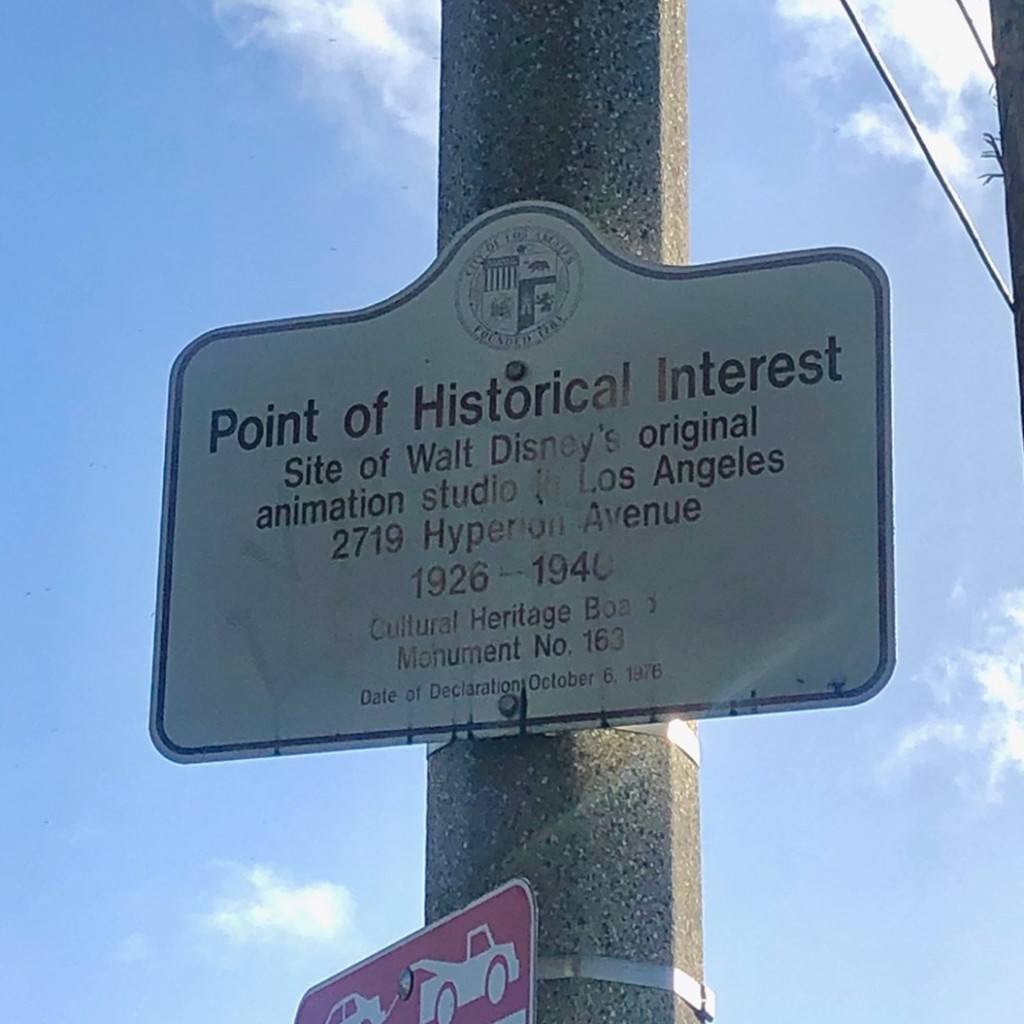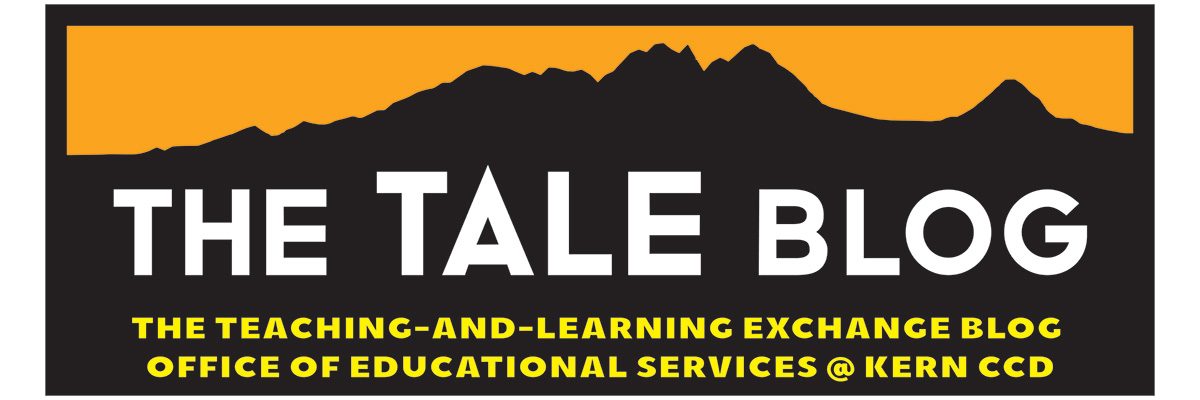By Robert Alan Simpkins
Earlier this year, my family and I had the opportunity to tour the Walt Disney Studio Lot in Burbank thanks to some friends who arranged it and walked us around. For Disney aficionados like us, the tour was rich with subtle history, following in the footsteps of some great creative figures – from well-known animators like the ‘Nine Old Men’, or other unique talents like Kay Nielsen, Mary Blair, Tyrus Wong, and Retta Scott – whose individual contributions to the studio are not always recognized, even when the work itself may be familiar. The visit was the culmination of a period of several months of a kind of Disney pilgrimage that started the previous summer in Kansas City, where we saw the site of Disney’s first studio, Laugh-o-Gram, and continued in the winter when we visited his first studio after coming to California in 1923 on Kingswell Avenue in Los Feliz, and the site of his second studio on Hyperion Avenue (now lost, except for the remaining bungalow moved to the current studio lot). Visiting the sites helped me visualize Disney’s own journey from a young cartoonist, to a pioneering animator, to the owner of a major studio overseeing the work of hundreds of artists drawn from across America (and beyond) producing some of the most creative and innovative work of their time. It’s those early years especially that fascinate me, when there were few rules, except those of their own making, and the ideas about what could be done in animation storytelling were constantly changing. Although the studio on Hyperion Avenue no longer exists (a Gelson’s market now stands in its place, but inside are photos of the studio), standing at its former site helped me feel the presence of all those early artists working together and wonder what impact they had on each other, as they each evolved creatively while working collaboratively.


I also wondered what the equivalent experience could be in my own field of education, and how to bring together educators of different backgrounds, experiences, and perspectives into a place where we could learn from each other, be inspired by each other, and seek to improve ourselves with each other’s support. I had been fascinated to learn about what another community college had done some years ago in an effort to create such a space for new ideas and fresh thinking – Linn-Benton College’s “Wild Thinkers Forums” that evolved into “Innovation Councils” (Fay and Lahr 2019). I had that in my head when our former Kern CCD Chancellor Sonya Christian first mentioned an idea for a convening district-wide to discuss teaching-and-learning, and that would – over the next year and a half – evolve into what we would present in April 2023 as The Teaching-and-Learning Exchange Festival, or TALE FEST. The idea behind it was to gather, at least for a day, educators from across the Kern Community College District into one place where they could meet each other, learn from each other, and we hoped be inspired by each other. There was a risk to bringing together people who had never met each other, and came from different colleges with different local traditions and perspectives and expectations about their work, but our goal was to make it as friendly and inviting as a possible. With the support of then-Vice Chancellor of Educational Services, Emmanuel Mourtzanos, I reached out to an educator I believed would be the perfect fit for the event – Notre Dame Anthropology Professor Susan D. Blum, who agreed to come join us and set the tone with her own tale of her educational journey, and personal insights into teaching-and-learning. We then gave everyone at the event (seated with colleagues from other colleges and disciplines) time to talk with each other about different areas in our collective work, before giving away some books featuring different kinds of tales (and a delicious lunch!). The day was about as successful as I could have hoped for, with the energy and enthusiasm of everyone in the room apparent.

I knew this single event could not bring about a more permanent ‘culture of creativity’, nor lead to the building of a district-wide ‘innovation engine’, fueled by our ideas and energy. Faculty innovation often falls to individual faculty, or social groups formed through their own interaction and self-selection, and through seemingly inevitable siloing, groups diverge and divisions can emerge. And this does not include adjunct instructors, who are rarely able to participate in these social interactions, and classified professionals, managers, directors, administrators, student workers, and others on campus whose work is necessary to student success, and whose roles give them perspectives on students faculty may not experience. And so any institution may feature pockets of innovation, but to achieve this equitably across an institution, it needs to be embedded in the institution’s culture and system of support. This cannot be achieved on personal initiative or inspiration alone – it requires the cooperation of a college’s diverse and sometimes competing or even mistrustful stakeholders. It requires that combined participation of groups that work on different contracts (or without contracts). It requires compromise, sometimes disappointment, and letting go of the fears that prevent us from embracing meaningful change.
Popular culture often celebrates the inspirational teacher, and in doing so presents the work of education as the byproduct of gifted individuals. In the past two years in the work of Porterville College’s Guided Pathways Committee, which I co-Chair, we have tried to promote our goals for student success as deriving from a holistic, college-wide approach, with our instructors as a critical part of the vision, but also working in partnership with a variety of specialists in other, non-instructional roles. As part of that effort, last year we solicited input from across the college for ways to ‘ensure learning’, following the phrasing of Guided Pathways Pillar 4 and the California Community College Chancellor’s Office’s Vision for Success. Feedback from our instructors (full-time and adjunct), managers, directors, and administrators was compiled into an ‘Ensure Learning Plan’, later endorsed by our Academic Senate and College Council. In the hard work of reforming our little college, those involved in the work have not always agreed, and at times, misperceptions, mistrust, and miscommunication have threatened to stifle progress, break the innovation engine, and enshrine the past as the obstacle to the future. This plan was a step toward a new vision of collaborative creativity, mutual understanding, and support.
The work ahead will be the most challenging part of this project, because it involves changes to habits, thinking, and relationships. Our approach to professional development may need to change to ensure we are exposed to and supported for year-round opportunities and the sharing of knowledge, resources, opportunities, and ideas that lead to continuous self-improvement. We took steps toward this part of the goal with the recent hire of a new Assistant Director of Academic Technology and Professional Development, and formed a task force revising and reviving our dormant Staff Development Committee. We engaged in extensive discussion with our Academic Senate – for which I served as President the past two years – on the faculty role as an area that falls by California law under Senate purview (#8 in the ‘10+1’ for California Community Colleges). And through district-wide efforts initiated by our former Chancellor Sonya Christian, we have discussed ways in which to ‘ensure learning’ as individual colleges and through the mutual support and the exchange of ideas across the Kern Community College District. Even this TALE Blog itself is part of this effort to nurture that ‘culture of creativity’ toward our institutional educational goals, and generate enthusiasm for our educators alongside mutual understanding and support.
The work of a small, rural community college like Porterville College may not be comparable to one of the most successful film studios of all time, and I could only dream that one day someone would walk its campus and think about the work that was done here, the people who did it, the love they had for that work and those for whom they did it – the students, who are the future of everything around us and inheritors of what we do today for tomorrow. Maybe to the students, all of our colleges could be like what Walt Disney told guests on that famous day in 1955 when he opened the amusement park he and his team of Imagineers and all of the other countless people who worked to realize that vision. As I write, we are preparing for a new event for our college – a Welcome Day – and hope that our new students will see this place too as a happy place in which they feel welcome, and where they may “savor the challenge and promise of the future” and “hope that it will be a source of joy and inspiration” to them in their lives, and to our community. Education, after all, is a place of adventure, of fantasy, of new frontiers, and of dreaming about tomorrow.
Acknowledgements:
I would like to express my gratitude toward the Community College Research Center at Columbia University, and Davis Jenkins and Hana Lahr in particular, Achieving the Dream coach Bret Eynon, Porterville College Vice-President of Student Services Primavera Arvizu and California Community Colleges Chancellor Sonya Christian for their collaborations that helped make the work described here possible, as well as everyone at Porterville College and the Kern Community College District with whom I have had the privilege to work on these projects.
Works Cited:
Fay, M. P., & Lahr, H. (2019). Wild thinkers: Linn-Benton Community College’s creative and collaborative approach to guided pathways reforms. New York, NY: Columbia University, Teachers College, Community College Research Center.

Robert Alan Simpkins has been a Professor of Anthropology at Porterville College since 2012, where he is currently faculty lead for Guided Pathways and the Academic Senate Past President. He previously served two terms as the Academic Senate President, and before that two terms as the Social Science Division Chair, and organized PC’s CHAP (Cultural and Historical Awareness Program) series for five years. Prior to coming to PC, he was an adjunct instructor at De Anza College and at San Jose State University. He has an MA and a PhD from the University of Wisconsin-Madison, and BA from San Jose State University. As an Archaeologist, he is interested in the relationship between roads, architecture, cultural landscapes, and socio-political organization. His particular focus has been the Golconda kingdom in the Indian Deccan region, which was the subject of his doctoral dissertation and on which he has presented his research internationally and published extensively, most recently in the article “Inferring Road Networks and Socio-Political Change from Elite Monuments of the Golconda Kingdom” in South Asian Studies in 2020. Although a native of the Bay Area, he enjoys the farms and orchards of the central valley and the proximity to the mountains, and going on drives and exploring the region with his family. He has a weakness for books, toys, classic movies and animation, art, stories, and anything that he finds amusing.

